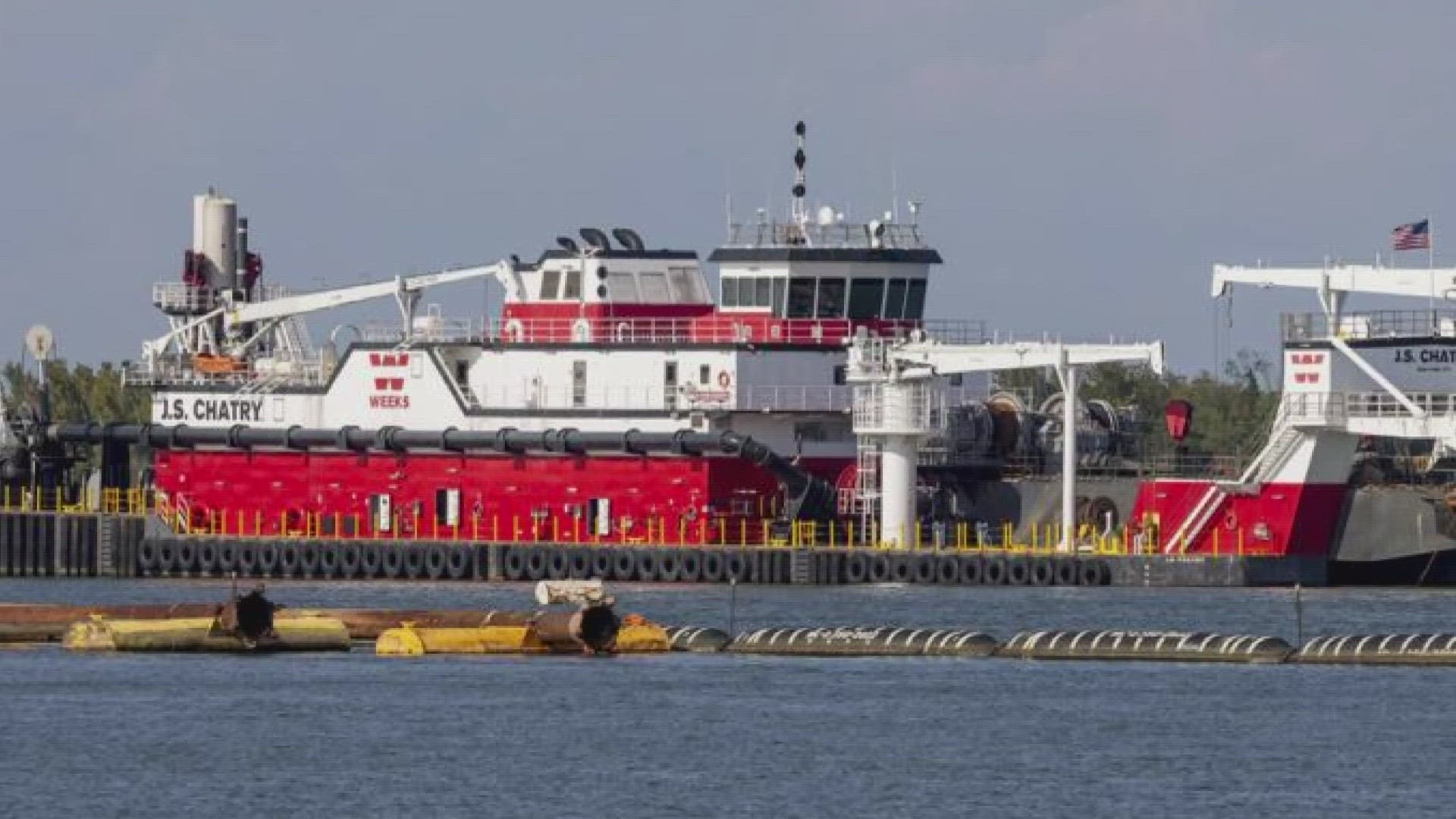NEW ORLEANS — The first line of defense against a moving current of saltwater slowly making its way up the Mississippi River is an underwater barrier at mile marker 64 in Plaquemines Parish.
Monday, the Army Corps of Engineers started raising the elevation of the sill from 55 feet to a depth of 30 feet. The toe of the saltwater wedge overtopped the sill last week.
“We built the sill in July and we’re now bringing it up another 25 feet higher with keeping a shipping lane, so that navigation can still continue along the river,” USACE spokesman Ricky Boyett said.
The work is now expected to take 24 days to complete. The Army Corps is also trying to cobble together a fleet of barges that would gather water upriver and deliver it to downriver treatment plants inundated by saltwater.
“Once the water treatment facility gets this water, they can mix it with the water that they are pulling in to dilute the salinity levels to safe levels for drinking treatment,” Boyett said.
The Corps used barges to bring water to treatment plants in 1988, the last time saltwater made its way up the Mississippi. This time, the Corps is hoping to be able to transport 15 million gallons a day by the end of the week and eventually up to 36 million gallons a day.
“We will take these barges upriver,” Boyett said. “We will fill them up with water that do not have the salinity impacts of the saltwater wedge and then we can bring them down to a water treatment facility and offload it.”
Local water treatment plants will need to have a reservoir barge and other equipment on scene to receive the water.
Something, the New Orleans Sewerage and Water Board is now working on.
“We have a consultant engineer right now working on that very setup for our Algiers plant,” SWBNO Deputy General Superintendent Steve Nelson. “I believe that’s a viable option for us, the best option we’ve got at the moment.”
Nelson also says the most viable option for the Carrollton water plant, which treats about 150 million gallons of water a day, is to push in fresh water from upriver parishes not impacted by the saltwater.
“We’ve got a lot of regional partners we are in communications with daily. Had a briefing and GOHSEP with today and we are hopeful we will find a solution that will allow not just Orleans Parish and Jefferson and by extension, we’re working with St. Bernard.”
SWBNO is telling its rate payers, at no time will the utility simply cut off the water supply.
Officials also say there is plenty of fresh, available drinking water and if or when there is an issue with the water supply, the utility promises to let the public know well in advance.

